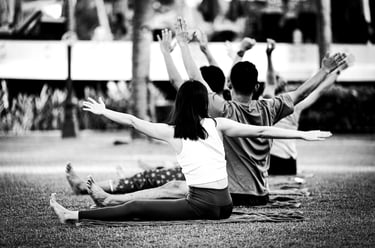Lower Back Pain & Sedentary Work
Globally, low back pain is the single leading cause of disability, according to the World Health Organization. The organisation anticipates a surge in cases from 619 million in 2020 to 843 million in 2050, driven by ageing populations.
It's not confined to workers in physically demanding jobs. Musculoskeletal injuries, once associated mainly with manual labour, are increasingly linked to sedentary work, particularly the extended periods of being hunched over a desk - a trend made worse by the rise of remote work.
The high-pressure nature of many screen-based jobs is another contributing factor, demanding increased productivity within limited time frames. While much attention is given to the stress impact of such roles, it's crucial to acknowledge their physical effects as well.


Regular exercise is probably the best prevention for back (and neck) pain. Exercise can improve the delivery of essential nutrients to the discs that sit between the vertebrae, while exercise also strengthens muscles. It is also important to stretch the hamstrings and gluteal muscles and build core stability. Additionally relaxing, sleep, a healthy diet and good mental health are also important preventive measures


More Insights
